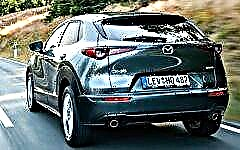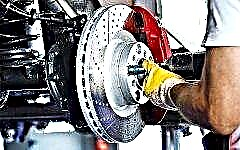

The content of the article:
- Axle reducer
- Oil consumption
- Catalyst
- Valve train chain
- Tension rollers
- Oil gauge
- Stabilizer bushings
- Silentblocks
- Manual transmission
- Seals
- Camber bolts
- Retainers
- Seat creaks
- Fuel filler flap
- Rear arches
Today Suzuki Grand Vitara is considered one of the most popular SUVs in the CIS countries. In the vastness of Japan and other Asian countries, the car is better known as the Suzuki Escudo. It is not uncommon to find the name SGV or SE, which means abbreviated names from the same model. The third generation was first introduced in 2005 and was produced through 2013-2014 inclusive.
The peculiarity of this model is that during the production the car has proven itself on the good side and won the glory of a reliable crossover in many moments. There are also disadvantages that have not been removed during the production period of this generation of Suzuki Grand Vitara. Consider the main malfunctions, the possibility of solving the problem, as well as the consequences of a breakdown.
1. Front axle reducer

Many Suzuki Grand Vitara owners repeatedly talk about problems with the front axle gearbox. It should be noted that this problem does not depend on the car's mileage, but directly depends on how the car is operated. Often, when changing the oil in the gearbox, you will notice an emulsion. The reason is the gearbox breather, which is not so long and moisture is often sucked in through it.
As a rule, long-term driving on such an emulsion can lead to a hum when driving, and over time, the gearbox completely fails, as the moisture does its job. One of the solutions is to lengthen the breather, as well as monitor the quality of the oil in the gearbox itself. To do this, it is enough to slightly lower the drain bolt and see what kind of liquid will flow from the gearbox.
2. Engine oil consumption

Zhor, increased oil consumption, oil consumption - as soon as the owners of Suzuki Grand Vitara do not call this problem, but it is worth noting that there is a problem, and it is practically impossible to solve it. The engineers arranged the engine this way and therefore, the car will start eating up oil from the dealership. Visibly starts to eat oil somewhere from 60 thousand kilometers. One can argue about this problem for a long time, as well as about solutions.
Nevertheless, the owners brought out a scheme that needs to be changed not according to the regulations, once every 15,000 km, but once every 8,000 km. Since there is no sense in dealer service. They say that rolling on oil has a detrimental effect on the fuel system, coke is deposited in the pistons, deposits appear in the rings. As a result, more oil is consumed than indicated by the regulations. A temporary solution to the problem: switch to a thicker oil 5W-40 or 10W-40, if necessary, replace the valve stem seals and piston rings.
3. Ineffective catalyst

A clogged catalyst may be associated with increased oil consumption. In addition to the engine, it cokes together with the exhaust gases, and then the exhaust system suffers. Most often, the lambda zone or catalyst sensors fail. The on-board computer starts showing errors (P0420 and P0430).
Decryption of errors can be found in special catalogs and on the Internet. Service centers solve the problem by replacing the catalyst and the necessary sensors. The owners of the Suzuki Grand Vitara decide in different ways, some put emulators and tricks, while others cut out the catalysts, change the firmware in the control unit and modify the exhaust system.
4. The chain in the engine rattles

A very common cause of hum from the engine is the timing chain. All units of the most common configurations of the Suzuki Grand Vitara are based on a chain drive. On average, the timing chain begins to hum after a run of 60 thousand kilometers. The main reason is the loosening of the chain tensioner. To solve the problem, it is enough to replace the damper by removing the valve cover.
The ideal option is considered a complete maintenance on a chain. It is better to unscrew the front of the engine, completely replace the timing chain, chain damper, tensioner and sprockets. You shouldn't take too long with this, since the destruction of the plastic of the damper is usually observed at 120 thousand. If you do not check it in time, the chain can jam or even break off. Therefore, it is better to replace the chain and all related parts.
5. Belt tensioning rollers

There are two main rollers in Suzuki Grand Vitara engines. One roller is responsible for connecting the crankshaft with the generator, the other for the belt with the power steering and air conditioning pump. The problem is classic, somewhere after 80 thousand mileage, bearings begin to die. Noise, hum, dry running of bearings. No matter how you lubricate, from strong revolutions the lubricant will come out, and the hum will return again.
It is not worth changing each part of the video separately, just spend time, nerves on pressing, and so on, and there will be no result. It is best to buy new, factory-made ones and replace them. It will take a maximum of 30 minutes to replace two rollers if you have a spanner wrench for 13 and a face for 10, check the belts at the same time.
6. Engine oil pressure sensor

The problem of failure of the oil pressure sensor is the overflow of the oil itself. The overpressure of the oil pump also plays an important role, the sensor simply squeezes out. As a result, oil can flow in a stream from under the sensor and if not noticed in time, the engine will simply jam. The safest solution is to replace the oil sensor.
7. Front stabilizer bar bushings

According to the owners of the Suzuki Grand Vitara, the front stabilizer bushings are considered consumables, especially considering the road conditions. On average, the life span of the front stabilizer bushings is 8-10 thousand km. Although, sometimes less, since it all depends on the driving style and distance. Owners of a Suzuki Grand Vitara with a 2.0-liter engine can be advised to take bushings from a complete set with a 2.4-liter unit. They are slightly larger, but they work better and last twice as long. For a complete set with engines of 2.7 and 3.2 liters, it is better to buy native ones, the features of these cars are individual.
8. Cracked silent block

A common and fairly early problem of the Suzuki Grand Vitara 3 is a torn rear bushing of the front lever. There may be several reasons, bad roads, off-road driving or souring of the adjusting bolts. There are several solutions to this problem, some are changed to silent blocks from Honda or to polyurethane ones. Others prefer to replace the lever assembly. Naturally, prices differ by almost 10 times.
9. To include or not to include 1st gear

This item only applies to Suzuki Grand Vitara with a manual transmission. The most common transmission is considered to be an automatic transmission, but there are options with a manual transmission. So, in the manual transmission there is a problem when turning on the first gear on a warm car. The box refuses to turn on, turns on with a growl, does not find 1st gear at all. There is no definite solution to this problem, and there is no point in changing the box entirely. Some decide to go over the manual transmission, others go to dealerships, where they eliminate this problem by various efforts.
10. The door seal spoils the view

The fact that the hanging seal will be visible somewhere is a trifle. Much worse if the same seal ruins the paintwork. Over time, the seals on the doors simply erase the paintwork, especially on the tailgate. The view, of course, is not the best. Some owners tint, others just open it with varnish, but it's better not to leave it to chance.
11. Camber adjustment bolts

A sour bolt can be found even in the newest car, especially by examining its underside. The reasons are commonplace, water and weather conditions. As a rule, the rear bolts usually turn sour. In this case, it is impossible to adjust the toe camber. The only solution is to cut off the sour bolts with a grinder and put new ones. Paired with bolts, silent blocks are usually changed. It is best to lubricate the adjusting bolts with graphite or copper grease during replacement, so they will last longer.
12. Turned down door retainer

Doors do not hold open, do not open well or even wheeze. For Suzuki Grand Vitara, this is a normal illness. The metal from which the clips are made leaves much to be desired. The solution to the problem is to install new clamps, although you can try to repair the old ones.
13. The seat squeaks

This sore, in the form of a squeak in the driver's seat, affects all Suzuki Grand Vitaras, without exception. According to experienced owners, the creak comes from the tabs of the side airbag attachment. It is enough to bend the fasteners in the desired direction. It would seem a trifle, but the nervous system is shaking, and you can only repair it yourself, you will not be saved by replacing the part.
14. The hatch of the gas tank does not open

A very common problem in the Suzuki Grand Vitara is the electronically opened gas tank hatch. The problem is that the pin of the lock is erased over time, or rather its fasteners and the pin itself does not hide in the socket. That is why the hatch of the gas tank is difficult to open or close over time. To solve the problem, you need to grind off the pin a little with a file, but do not overdo it, otherwise the hatch will not close.
15. Rear arches moldings

It is no secret that many SUVs suffer from bugs on the rear wheel arches. Large tires and the design of the car itself are designed so that dirt, sand and moisture constantly get between the metal and the seals. The Suzuki Grand Vitara has a molding on the rear wheel arches. If washed under high pressure, it simply breaks or peels off. It would seem a trifle, but without it, iron begins to rust and bloom. You can solve the problem with liquid nails or something like that.
Overall, the third generation SUV Suzuki Grand Vitara has a positive impression. The car is reliable and unpretentious, a minimum of electronics, maximum controllability. If you service the car on time and change the necessary parts, Suzuki Grand Vitara will delight you for more than one hundred kilometers without any special repairs. It is enough to fill up with high-quality gasoline, look up to the oil level in the engine and listen to the overall operation of the unit.
Suzuki











